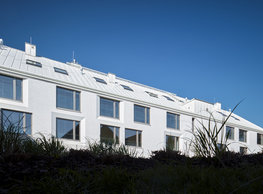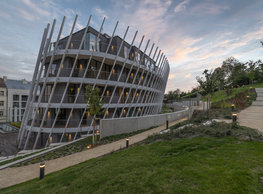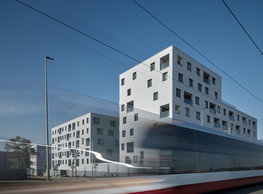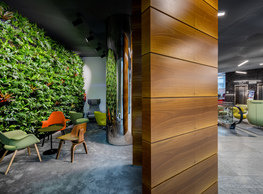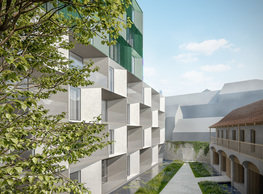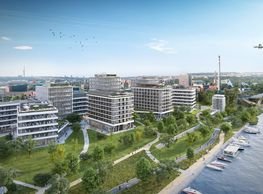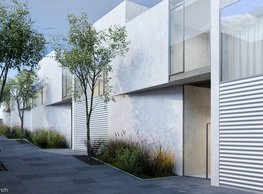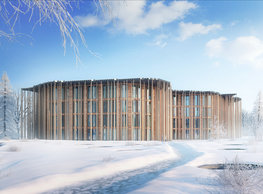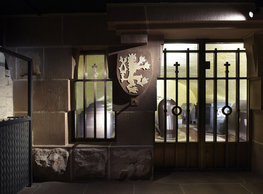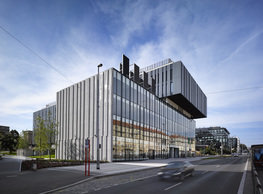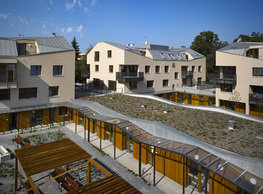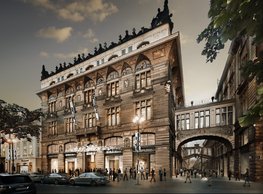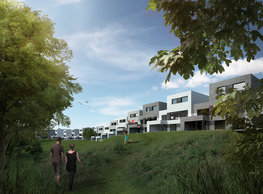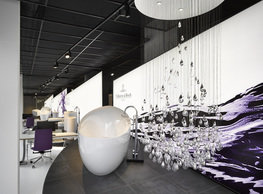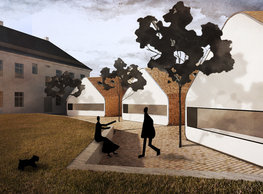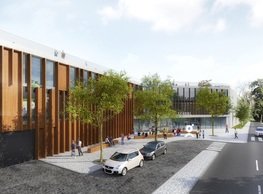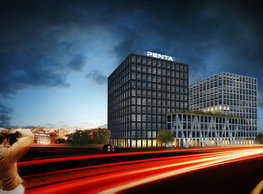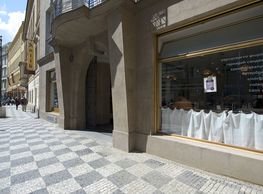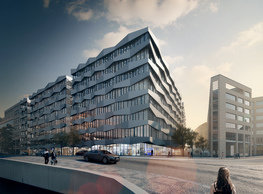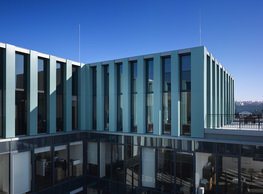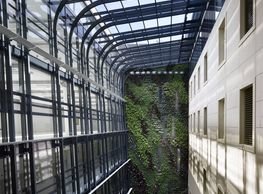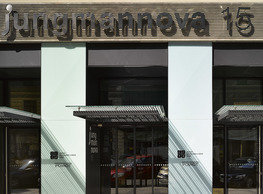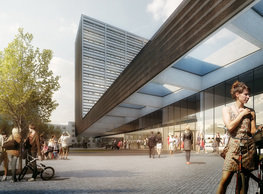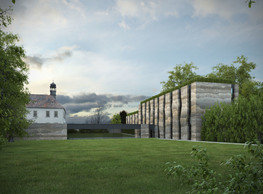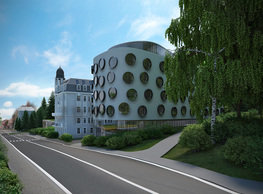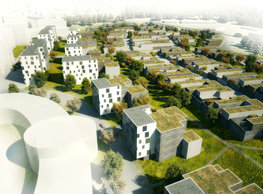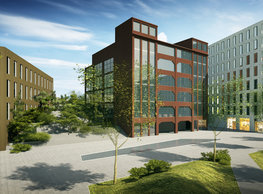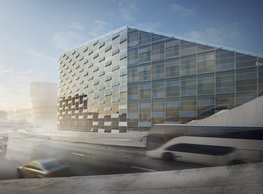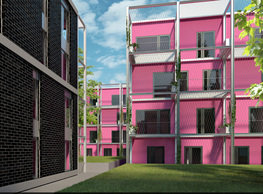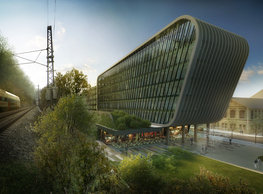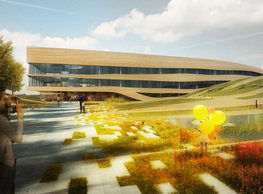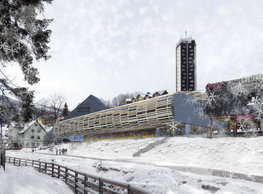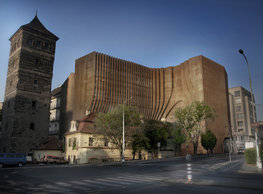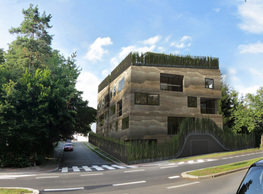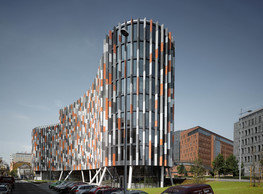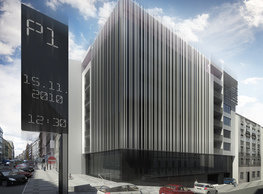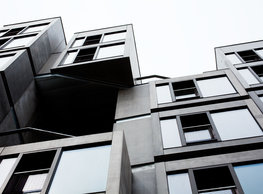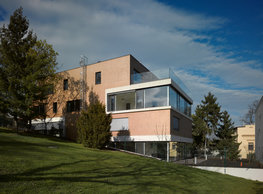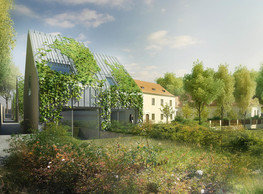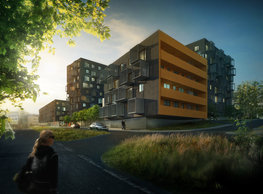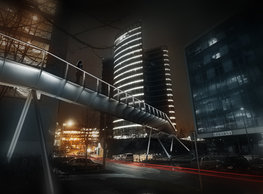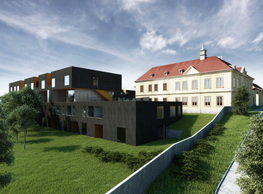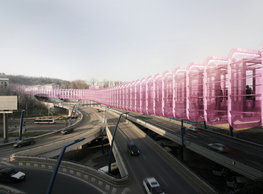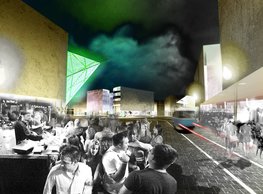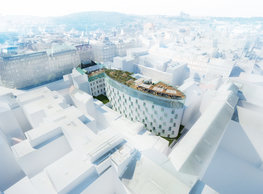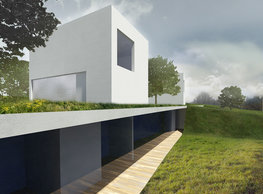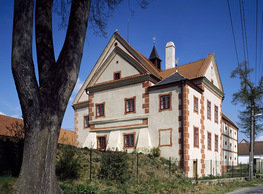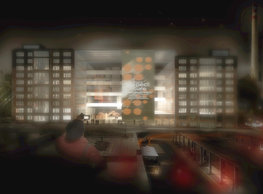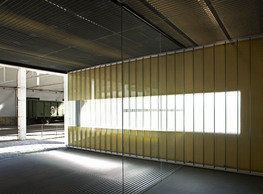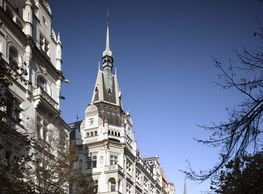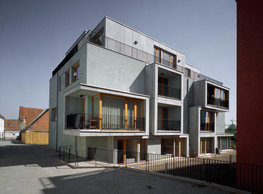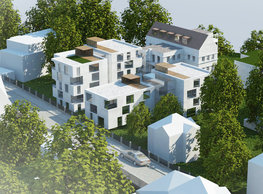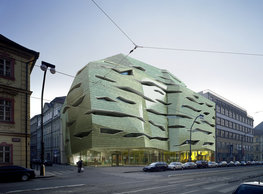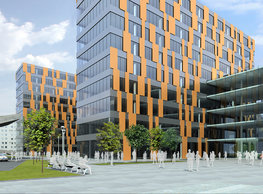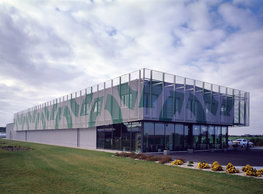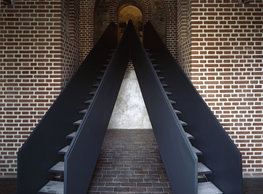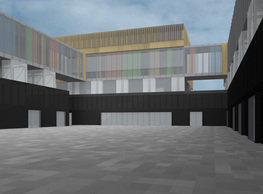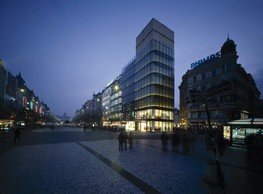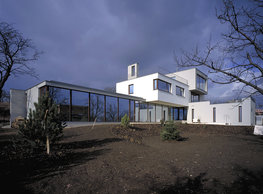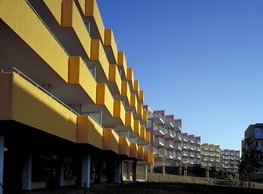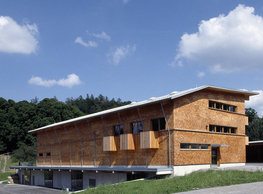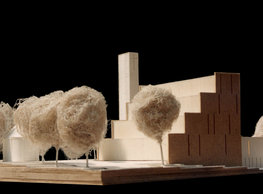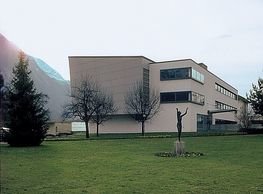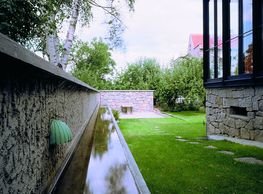The essential design motto is a delicate conversion of the historical complex and, at the same time, respecting the existing buildings of the Cloister of St. Gabriel that should contribute to the overall renovation of its original parts and all historical elements. Another substantial motive of our design is to provide better access to the compound from Holečkova (street) and create a new streetscape with appealing public space. New inconspicuous volumes incorporated into the cloister’s terrain, clutching to the existing structures and continuing the paradise garden’s typology complement the cloister’s entire composition. History The cloister was gradually built from 1888 in the neo-Romanesque style by the congregation of Beuron Benedictines. It served as a nunnery until 1919, when the nuns moved to Austria. Since then, the building has been used by the post office and Czech Post, from which a private investor purchased the building in the year 2020. Urbanism At present, Holečkova street is only a busy traffic vein. Its depersonalized character is defined by a line of high stone retaining walls forming a barrier between the pavement and Zahrada Kinských (garden). Recent developments in the vicinity of Holečkova try to respond more or less to this pitfall by stepping the buildings’ street line back and making the street front wider, allowing to build functional quality public space with greenery, shops, and services. Houses across the street from the cloister step back so much that it is possible to build public space here in the future, a square connecting Zahrada Kinských and Sacré Coeur Park and the shopping center in Prague 5-Anděl. There is an effort to implement a new pedestrian connection from Holečkova Street to Kinsky Garden and Petřín hill. Design By its size and architecture, the cloister building is perceived as a landmark of the whole street, and that is especially its eastern corner – the Church of St. Gabriel – and the cloister’s two towers on the western side. Our design’s concept tries to underline the church as a landmark by forming a sloping green area between the pavement level and the church entrance. This green slope is understood as the church’s pedestal, public space, and an element connecting both terrain levels. By its form, the slope suggests openness and accessibility towards the public and the surroundings. At the same time, it is advisable to wed the surrounding landscape of parks and tree lines to build a pleasant environment for people. The slope in front of the church, where the street steps back and the new square is designed, is replaced by a new mass of the portal integrating a new entrance into the hotel with an area offering commercial use. This mass continues the street line of the surrounding buildings. Therefore, it will be stepped-back from the retaining wall’s current position to provide a comfortable width of the pavement in front of it. The hotel entrance portal offers a sufficiently spatial sheltered room in front of the hotel’s main lobby and, by its architecture, defines the stately atmosphere of an entrance to a top-class hotel. The portal’s structure’s design refers to the two principal elements of the cloister’s historical building. These are fair-faced masonry walls and recessing segmented window and door reveals. Our design, however, does not slavishly copy these essential architectural elements but transforms them into a modern and novel structure. It modifies them into unique glass-block structures, arranging them into a regular spatial pattern. It refers not only to the described elements of the cloister but also to the world-renowned Czech crystal glass tradition. Individual light sources (diodes) are inserted into the glass blocks that may make the portal gleam in many colors. We assume that it may have effects resembling the currently widely popular video mapping on outstanding buildings’ facades. The architecture of other designed areas of the complex also builds on the cloister’s original elements, and it is transformed into contemporary forms of the 21st century. Here, too, window and portal jambs become the principal motifs, step-tapering inwards, this way accentuating each opening. Also, the material and scale of classical bricks used in the entire complex are elements used for the new buildings (not only the westwork portal), either light in color or glass ones. The game of glass, light, and shadows is an essential motto of new masses resulting from the linkage to the cloister’s history and the future function of a 5-star hotel. Glass in various forms with light effects well matches the unique luxury of accommodation. The material enjoying a special status and historically globally renowned is presented to guests in its complex form; that is not only as an individual design or artistic elements but as an essence of the entire hotel’s environment that will give its guests a unique feeling of being accommodated in a crystal. The church building will be fully preserved to the maximum extent as an example of Beuron “gesamtkunstwerk” and will be used for religious, cultural and social events. Several works of art are designed on the cloister’s grounds, referring to its history, glass-making history, the motive of new light, and the whole complex’s life.
portfolio
![]()
monastery of st. gabriel
![]()
nová zbrojovka block g
![]()
nad krocínkou a
![]()
nad krocínkou b
![]()
dobřichovice farmstead
![]()
nymburk train station
![]()
stará boleslav primary school
![]()
holečkova 26 residence
![]()
komořany elementary school
![]()
kindergarten jeseniova
![]()
nová elektra residence
![]()
filadelfie bldg. – the new reception
![]()
písnice elementary school
![]()
bytové domy vítězná/újezd
![]()
afi vokovice
![]()
showroom elite bath/bulthaup sk
![]()
port 7
![]()
main point pankrác
![]()
oktáva houses
![]()
lesy čr headquarters
![]()
royal tomb
![]()
the blox
![]()
dob centre in dobřichovice
![]()
contemporary glass muzeum
![]()
pod hády brno
![]()
elite bath showroom karlín
![]()
communal flats in dolní břežany
![]()
šantovka residence
![]()
open gate II
![]()
ružinov office building
![]()
dlouhá palace
![]()
vinohradská 8
![]()
masarykovo railway station
![]()
retail and office development
![]()
jindřišská 16
![]()
jungmannova 15
![]()
regina hradec králové
![]()
chateau dolní břežany
![]()
the metropole hotel in mariánské lázně (marienbad)
![]()
waltrovka
![]()
square mechanica
![]()
porto mercandini
![]()
plzeňská 18
![]()
vrchlického residence
![]()
karlín railway
![]()
science research centre
![]()
sněžka apartment house
![]()
novomlýnská brána
![]()
jeremenkova residence
![]()
main point karlin
![]()
flat b3 prague
![]()
štěpánská 47
![]()
tenement house with a gym
![]()
švédská residence
![]()
hendlův dvůr
![]()
klamovka residential complex
![]()
botanica vidoule phase 6
![]()
footbridge in bb centre
![]()
perníkářka manor
![]()
municipal interventions prague 2010
![]()
černá louka ostrava
![]()
evropa hotel
![]()
bb centrum filadelfie
![]()
family houses in radotín
![]()
cherubín II
![]()
fc bohemians praha 1905
![]()
ostrolovský újezd chateau
![]()
zlín cultural centre
![]()
znojemská hospice
![]()
pilsner urquell
![]()
st. wenceslas exposition
![]()
institute of noblewomen
![]()
karlov office building
![]()
cherub I
![]()
pařížská 9
![]()
jinonice villa park
![]()
petynka hotel
![]()
sanopz residential complex
![]()
viktoria center pankrác
![]()
hotel crystal palace
![]()
invalidovna offices
![]()
performing arts center seoul
![]()
boscolo carlo IV hotel
![]()
toner recycling company building
![]()
the story of prague castle
![]()
umprum in prague-ďáblice
![]()
mrázovka apartment villa
![]()
school gym in prague-troja
![]()
roma hotel
![]()
euro palace
![]()
ten centuries of architecture
![]()
villa třešňovka
![]()
velká skála
![]()
sternberg palace prague castle
![]()
st. nicholas church in čečovice
![]()
olga and václav havel's villa
![]()
tierpark langenberg
![]()
a church in neratovice
![]()
school centre interlaken
![]()
forestry school in lyss
![]()
villa dobeška
![]()
tuscany in maps




